<> Athyma ranga (Moore, 1858) <>
the Black-veined Sergeant ผีเสื้อจ่าเส้นปีกดำ
Click on any photo to see all photos full size in Lightbox
Additions and corrections to the information provided on this page is always welcome. Please use the Contact form.
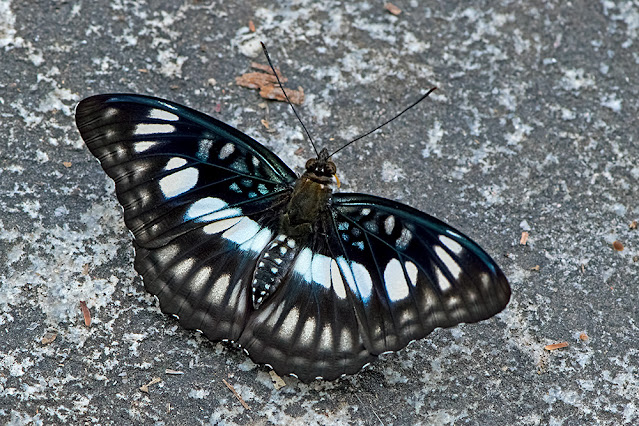
Photo taken at Doi Suthep-Pui National Park, Chiang Mai. Thailand. 450m a.s.l.

Athyma ranga is widely distributed and fairly common throughout most of the region. The sexes look similar and it is impossible to distinguish between them in the field although the female is a little larger. It has a swift and powerful flight with rapid wing beats alternating with spurts of smooth gliding. Although they are powerful fliers it is usually only over short distances, settling periodically on the ground or on low vegetation.
The species flies for most of the year and is multivoltine with several broods per annum. The males are very territorial and survey their territory from the tops of bushes, seeing-off any intruders. Neither sex are regular nectar feeders but males are frequently seen mud puddling.
Synonyms and previously used names: Athyma mahesa, Pantoporia ranga, Pantoporia obsolescens
Taxonomy: Animalia - Arthropoda - Insecta - Lepidoptera - Nymphalidae - Limenitidinae - Athyma - ranga
Regional subspecies : Athyma ranga obsolescens (SE.Thailand, Vietnam, S.China), Athyma ranga ranga (NE India, Nepal, Myanmar, N.Thailand, Laos)
Regional Distribution: India, Nepal, Bhutan, Bangladesh, Myanmar, Thailand, Laos, Cambodia, Vietnam, China
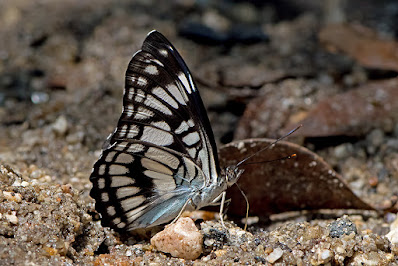 |
Doi Suthep-Pui National Park, Chiang Mai, Thailand. 450m a.s.l. |
Habitat: Athyma ranga is a forest dependent species and is found in evergreen and moist deciduous forest, often near streams, and at elevations up to 2000m a.s.l.
Flight time: all year round, depending on location Wingspan: 45-55mm
Life History: egg 3-4 days instar 1 5 days instar 2 5 days instar 3 5 days instar 4 7 days instar 5 12 days pupa 9-19 days Total egg to adult 46-57 days
All times are approximate and can vary depending on the season and on the host used.
Larval Hosts: Chionanthus caudifolius, Chionanthus mala-elengi, Fraxinus insularis, Ligustrum lucidum, Ligustrum sinense, Olea dioica, Olea brachiata, Osmanthus fragrans, Tetrapilus brachiatus, Tetrapilus dioicus, (Oleaceae), Gmelina arborea (Lamiaceae), Lonicera sp. (Caprifoliaceae)
Actual host plant used depends upon location and availabilty of plant species.
Adult Food Sources: Nectar - Zanthoxylum avicennae (Rutaceae), Turnera ulmifolia (Passifloraceae). NOTE: this species is not known as a regular nectar feeder but there may be other flowers other than the two listed here that it sometimes visits. Other - mud puddling.
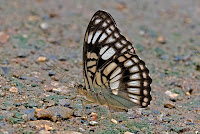 |
| Chiang Dao Nature Sanctuary, Chiang Mai, Thailand |
 |
| Doi Suthep-Pui National Park, Chiang Mai, Thailand |
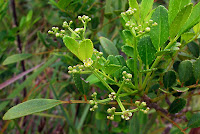 |
| Zanthoxylum avicennae, a nectar source |
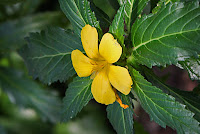 |
| Turnera ulmifolia, another nectar source |
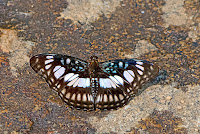 |
| Lamnamkok National Park, Chiang Rai, Thailand |
NU.jpg) |
| Doi Suthep-Pui National Park, Chiang Mai, Thailand |
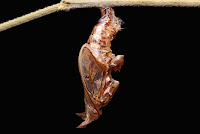 |
| pupa |
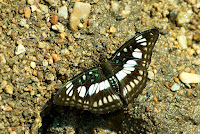 |
| Doi Suthep-Pui National Park, Chiang Mai, Thailand |
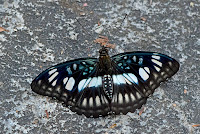 |
| Doi Suthep-Pui National Park, Chiang Mai, Thailand |
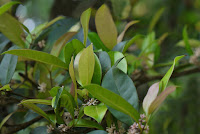 |
| Chionanthus mala-elengi, a larval host |
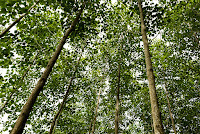 |
| Gmelina arborea, another larval host |
Links to other pages in this series for species in the same subfamily
Athyma perius
Auzakia danava
Euthalia alpheda
Euthalia lubentina
Lasippa viraja
Limenitis asura
Neptis cartica
Neptis miah
Pantoporia hordonia
Sumalia daraxa
Athyma pravara
Bhagadatta austenia
Euthalia anosia
Euthalia monina
Lebadea martha
Limenitis dudu
Neptis clinia
Neptis nashona
Pantoporia paraka
Sumalia zulema
Athyma ranga
Cynitia cocytus
Euthalia evelina
Euthalia patala
Lexias dirtea
Moduza procris
Neptis hylas
Neptis nata
Parthenos sylvia
Tanaecia jahnu
Athyma selenophora
Euthalia aconthea
Euthalia franciae
Euthalia phemius
Lexias pardalis
Neptis ananta
Neptis magadha
Neptis soma
Phaedyma columella
Tanaecia julii
